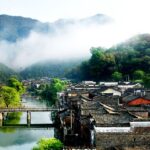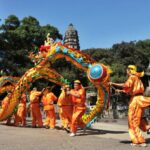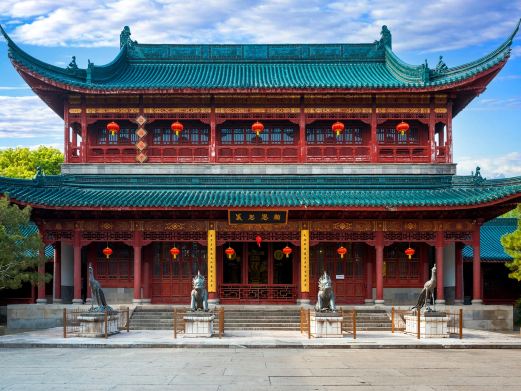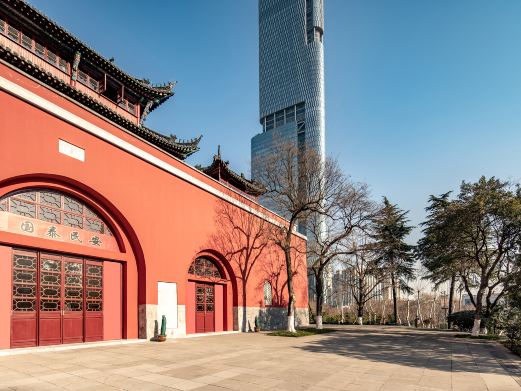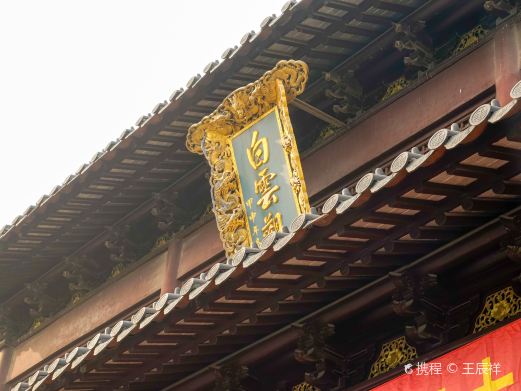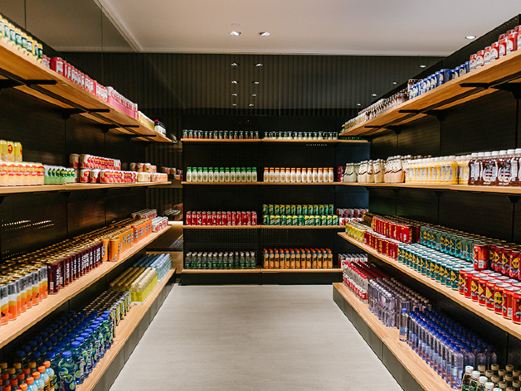The scenic area at the foot of Huishan Mountain on the west side of Xihui Park is the main scenic spot for tourists. It includes famous attractions such as Jichang Garden, Huishan Temple, and the Second Best Spring Under Heaven. To the east of the scenic area is Yingshan Lake. Further east is Xishan Mountain. According to legend, there were abundant tin mines here during the Zhou and Qin dynasties.
By the Han Dynasty, the tin had been exhausted – hence the name Wuxi. The city name of Wuxi originates from this. Every spring, generally in April, the Huishan Folk Culture Temple Fair is held here. Because March 28th of the lunar calendar is the birthday of Huang Feihu, the Great Emperor Dongyue of Huishan. The ‘lords’ of eight temples in Wuxi City will come to Huishan to celebrate their birthdays. At that time, you can see a parade team in ancient costumes carrying the ‘lords’ passing through Huishan Ancient Town and Xihui Park, which is very lively. April is also the time when azaleas are in full bloom. There is an azalea exhibition in Xihui Park. In autumn, there will also be a chrysanthemum exhibition. The 10-yuan leisure area sightseeing ticket refers to the Xishan area and does not include the scenic area. If you only go to the park to climb Xishan Mountain and not visit the scenic area, buying a 10-yuan ticket is enough. The 70-yuan full ticket can be used to visit both the scenic area and the area covered by the 10-yuan sightseeing ticket. It should be noted that if you buy a 10-yuan ticket and suddenly want to go to the scenic area, you have to buy a 70-yuan full ticket again. So before playing, you can think clearly about where you want to play. Xihui Park has a total of five gates. The Ancient Huashan Gate and Xiuzhang Gate are on the north side of the park, facing Huishan Ancient Town. The two gates are quite close to each other. The Xiuzhang Gate is closer to Yingshan Lake. If you want to go to the scenic area, enter through the Ancient Huashan Gate. The west gate of Xishan Mountain (the west gate of Qingshan Mountain), the middle gate of Xishan Mountain, and the east gate of Xishan Mountain (the east gate of the bridge) are on the south side of the park. You can enter from any of these three gates to go to Xishan Mountain. Entering from the west gate, there is the Xihui ropeway. Note that the ropeway is to the neighboring Huishan Mountain. There is no ropeway to the top of Xishan Mountain. Xishan Mountain is not high either, only 75 meters. Climbing it quickly leads to the top. In addition, the amusement park is also on the west side. Tourists with children who want to go to the amusement park can also enter through the west gate. Entering through the Ancient Huashan Gate is Jichang Garden built in the early years of Jiajing in the Ming Dynasty. It is well-preserved and is a famous Jiangnan garden in Wuxi. It cleverly borrows the scenery of ‘Erquan’ (Huishan Spring), Huishan Mountain, and Xishan Mountain. It leads the water of ‘Erquan’ into the garden to create water features. You can also see the reflection of Longguang Pagoda on Xishan Mountain in the distance in the pond in the garden. There are also stone plaques inscribed by emperors Kangxi and Qianlong of the Qing Dynasty in the garden. Walking southward, you will reach Huishan Temple which was built in the Northern and Southern Dynasties. The Longyan Spring of the Liang Dynasty, the stone sutra pillars of the Tang and Song dynasties, the listening pine stone bed of the Tang Dynasty, the Golden Lotus Bridge of the Song Dynasty, the ginkgo tree of Hongwu in the Ming Dynasty, and the imperial stele of the Qing Dynasty in the temple are all real historical relics. The well-known poem ‘At noon farmers weed with hoes; Their sweat drips on the soil below.’ – ‘Sympathy for the Peasants’ by Li Shen, a poet of the Tang Dynasty, was written here. Further south is the famous Second Best Spring Under Heaven.Lu Yu, the author of the Tang Dynasty’s ‘The Classic of Tea’, ranked the quality of Huishan Spring water as the second best for brewing tea. The area features three pools: upper, middle, and lower. At night, the moon is reflected in the pools, inspiring the famous erhu piece ‘Moon Reflected in Second Spring’ by the blind musician Abing. Adjacent to the Second Spring, there is a tea house where one must enjoy a cup of tea brewed with Second Spring water and listen to the played ‘Moon Reflected in Second Spring’, making for a very pleasant experience.

Furthermore, the scenic area includes attractions such as the Second Spring Academy and the Hua Xiaozi Temple. After touring these, if you wish to visit Xishan, head east, cross Yingshan Lake, and then climb the steps to the top of Xishan. At the summit, you will find the Longguang Tower, built during the Ming Dynasty, which is one of Wuxi’s landmarks. The tower is not accessible for climbing, but it can be admired from the outside.

Descending the mountain, one should visit the九龙壁 at the central entrance of Xishan, which, despite being newly constructed, is quite beautiful with its colorful pottery reliefs and glazed tile roof. South of Xishan, at the west gate entrance, there is an amusement park with rides such as bumper cars, mini shuttles, and rocking chairs, which require additional payment.

Upon entering the park through Xiuzhang Gate, on the left, there is a local specialty store selling authentic Huishan oil crisps. The ‘One Mu San Fen Tian’ restaurant at the entrance of Xiuzhang Gate serves delicious Suzhou noodles with sesame seeds added to the red soup, which is fragrant. There are also restaurants in Huishan Ancient Town where one can taste Wuxi’s specialty dishes, such as Wuxi soup dumplings and Wuxi spare ribs. Wuxi cuisine tends to be sweet, which may not suit the taste of tourists from other regions.
Transportation within the park: Reference price: 10 yuan per person.
Address: Entrance of Xihui Park.
Restrooms: There are 24 restrooms available within the park. For details, please refer to the park’s guide map.




